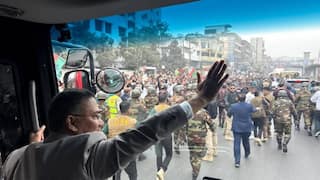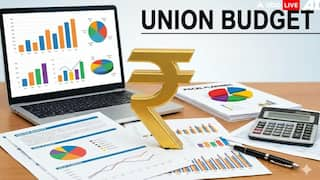Sri Lanka's Economic Downfall: What Led To Such A Disaster | Explained
The country’s economic misery is forcing an exodus to India. According to reports, about 16 Sri Lankan nationals have reached the shores of Tamil Nadu seeking refuge in India

New Delhi: Sri Lanka, the island nation in the Indian Ocean, is in the midst of a looming economic and energy crisis.
Depleting forex reserves, with surging inflation and rising prices of key essential imports have thrown life out of gear in Sri Lanka.
Since 2021, the economic situation in Sri Lanka has been getting worse as the government declared an economic emergency in the country. A sudden spike in food cost and fuel shortage compelled many to queue before grocery stores and petrol pumps.
News reports suggested rising cost of food items, sinking currency, and decreasing forex reserves have made matters worse for Sri Lankans. The current scenario in the island nation is worrisome as the country is on the verge of bankruptcy. Prices of essential commodities, including milk and rice skyrocketed, petrol and diesel not available and power stations shut.
The country’s economic misery is forcing an exodus to India. According to a report by IANS, about 16 Sri Lankan nationals have reached the shores of Tamil Nadu seeking refuge in India.
Why is Sri Lanka facing an economic crisis?
Here are some major reasons behind such an unprecedented fall.
Economists have pointed out that Sri Lanka was walking on a tightrope. The country was on the verge of an economic disaster as it was highly vulnerable to external shocks because of high debt.
The International Monetary Fund (IMF) in its release has mentioned that inadequate external buffers and high risks to public debt sustainability, aggravated by the Easter Sunday terrorist attacks in 2019 and major policy changes, including large tax cuts in late 2019, were the major reasons behind such catastrophe.
Sri Lanka heavily relies on tourism to earn foreign exchange. However, the serial bombings in Colombo in 2019 followed by the Covid-19 pandemic have majorly stopped forex inflows.
A massive foreign debt burden of nearly $5 billion with China alone is a lone contributor to this crisis. Sri Lanka is repaying a $1 billion loan acquired from Beijing in 2021. It also owes a large amount of money to India and Japan.
The nation relies heavily on imports. Imports of essential items such as sugar, pulses, cereals, and pharmaceuticals have compounded the issues owing to lack of foreign currency to pay for the imported goods.
On the energy front, the condition is so dire that the government had to shut down its only fuel refinery as it ran out of crude oil stocks. The country has also deployed soldiers at petrol pumps for rationing of fuel.
Last but not the least, the Covid-19 pandemic has hit Sri Lanka badly. The country didn’t get any chance to recover from the crisis, whereas the ongoing war between Russia and Ukraine was the final nail in the coffin.
Soaring crude oil prices, which has touched $120 a barrel, and rising inflation in key commodities have made lives difficult to sustain in Sri Lanka. News has come that two elderly persons have fainted while waiting in the queue to secure fuel at petrol stations.
What is the way forward?
The IMF recently said Sri Lanka needs to tighten its monetary policy to contain rising inflation, put its high debt repayments on track, and reverse one of the worst financial crises the country has faced in years.
According to a Reuters report, Sri Lanka’s reserves have tanked 70 per cent since 2020, dwindling to $2.36 billion at the end of January. But the island has debt repayments of nearly $4 billion this year, including a $1 billion international sovereign bond maturing in July. The dollar scarcity has prompted some analysts and rating agencies to warn of a potential default.
The IMF has called for urgent reforms to Sri Lanka’s economy. According to analysts, the government’s next big challenge is to repay the $1 billion bonds due in July.
Reuters has reported that Sri Lanka will hire a global law firm to provide technical assistance on debt restructuring ahead of talks with the IMF.
Efforts by India
The Indian government has already come forward to rescue Sri Lanka from such a deep crisis. External Affairs Minister S Jaishankar, while asserting India’s the government’s mantra ‘neighbourhood first’, said India signed a $1 billion credit line with Sri Lanka for supply of essential commodities.
A spokesperson from the Ministry of External Affairs said India has always stood with the people of Sri Lanka and will continue to extend all possible support to the country.





































